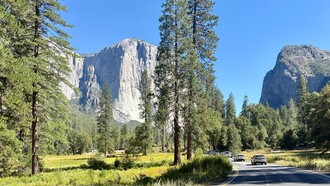Ang Tshering Lama’s1 dedication to safeguarding and preserving the rapidly vanishing Sherpa culture from the Himalayas is legendary. Whether it’s his rescue missions during the 2015 Nepal Earthquake, rebuilding remote Nepalese villages, or guiding an all-widow team to the top of the world, Ang has contributed immensely through his philanthropic efforts.
Ang's Message: preserving the Uttarakhand Himalayas
The Himalayas are an enigma, and rightly so! Spanning a distance of 2,500 kilometers in length and between 350 to 150 kilometers in breadth, with a maximum summit of approximately 9 kilometers above sea level, the greatest mountain range on Earth is renowned for its rarefied grandeur and diversity in both geography and centuries-old culture.
The Indian state of Uttarakhand and Nepal share an international border, separated by the Kali River. I have visited Uttarakhand many times, and the immensity of the Himalayan peaks, the warm-hearted Indigenous hill tribes, their remarkable lifestyle, and vernacular architecture have all enamored me.
In a world reeling under global warming and the climate crisis, Uttarakhand comes as a breath of fresh air. With snow-capped high Himalayan peaks like Nanda Devi (7816m), Chaukhamba (7138m), Panchchuli (6904m), and Trishul (7120m), standing like sentinels of peace, the region is a testament to nature's resilience.
We need to vow to protect the state’s fragile Himalayan ecosystem through a series of eco-friendly measures. These could include encouraging homestay options instead of commercially profitable multi-storied apartment hotels and promoting immersive holidays that focus on taking tourism to villages and hamlets. The idea is to make tourism ecologically sensitive and, in doing so, offer high-value experiences to discerning travelers.
Ang lauded the state government’s focus on promoting “Homestay Tourism” in the High Himalayan Zone. This initiative has a positive ripple effect on villages and Himalayan hamlets in Uttarakhand, curbing the instinct to migrate to urban areas and generating enough revenue for villagers who have opted to transform their homes into homestays.
According to Ang: “This is an exciting time for India as a nation – the third-largest economy by purchasing power parity and a USD 3.5 trillion economy. The Travel & Tourism industry alone generates USD 178 billion. With India becoming a global powerhouse, the nation’s tourism landscape must adapt to globally accepted tourism guidelines and standards.”
He is optimistic about India’s Uttarakhand and Nepal collaborating on a range of issues that concern both nations, such as tourism, climate change, the environment, and sustainability.
According to Ang, it’s not just the heights that lure trekkers to Uttarakhand. The region offers much more, such as some of the world’s most challenging waterways, a region rich in biodiversity, unparalleled national parks and game sanctuaries, and, above all, a diverse population with an incredible array of cultures, traditions, folklore, and festivals. Visitors can bask in the fun and excitement thousands of miles away from their hometowns in some of the most rugged mountain landscapes.
The Himalayan ecosystem is one of the most endangered life-support systems on Earth. In the shadow of the Himalayas live millions of inhabitants, many of whom are among the poorest in the world. Ang Tshering Lama is an ambassador for these impoverished Himalayan communities – the Sherpas, Tharus, Bhutiyas, Magars, and Rais.
Here’s hoping that Uttarakhand Tourism will be a beacon of hope in India’s pursuit of becoming a “Net Zero” country.
The time has come to join hands together and offer our generous support – emotionally, financially, and logistically – in shaping a brighter, more secure, and just world for the natives of the Himalayas. The time is now.
With Ang’s mindset, he is always looking for a good cause, whether it’s a campaign like “Say No to Drugs,” rebuilding villages in the aftermath of the 2015 Nepal Megaquake, or helping Sherpa children receive quality education. As a mountaineer, he breathes fresh air into the industry, with kindness, compassion, and benevolence for his community that is worth emulating. This is especially true in a time when many are fixated on summiting Everest and using the Everest Summiter’s Certificate as a ticket to fame, power, glory, and the arrogance that often accompanies it!
Nepal, as a country, doesn’t have an impressive track record when it comes to gender equality. Ang offered his helping hand to the duo Nima Doma Sherpa and Furdiki Sherpa, first by offering his knowledge and mountaineering skills to the duo – training them, providing them with logistical support, and finally guiding them all the way to glory on top of Mt. Everest.
Nima Doma and Furdiki both lost their husbands to the vagaries of the Himalayas while attempting to take their clients to the top of Mt. Everest. Ang was devastated when he learned of their plight but saw a silver lining and decided to do something that might ignite the spirit of all those Sherpa women who have lost their husbands to the mountains.
In an emotional talk, Ang Tshering Lama said: “As a Sherpa myself, I found the misery and discrimination of the widowed women difficult to resist. I thought the time was ripe to send a strong message of Sherpa women’s emancipation to the world. Initially, the very idea of taking the duo on top seemed risky – what if disaster struck? Nonetheless, considering the high energy levels shown by both Nima and Furdiki, I thought I should give it a shot, and the rest was history.”
In a country where opportunities for women are few and far between, the revolutionary 2019 Mt. Everest summit by these two widows of Nepal will go down in the annals of mountaineering as one of the bravest "Women’s Empowerment" initiatives ever undertaken.
Notes
1 Lama, A. T. (2023, October 4). The Halka 55 and 70 origin story: Meet Ang Tshering Lama. Hyperlite Mountain Gear.















